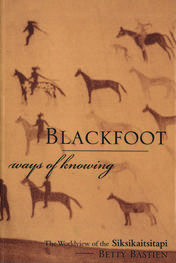Indigenous Studies
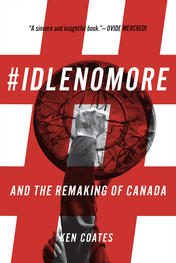
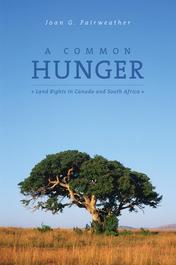
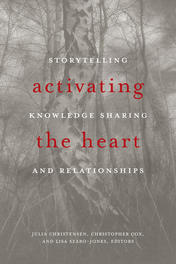

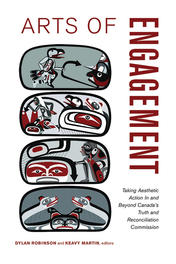
Arts of Engagement
Introduction
“The Body Is a Resonant Chamber”
Dylan Robinson and Keavy Martin
At the 2013 Québec National Event hosted by the Truth and Reconciliation Commission (TRC) on Indian residential schools, a Kanien’kehá:ka audience member summed up neatly the problem with the national project of reconciliation: “If you come and break the windows to my house,” he said, “you’re going to have to fix those windows before I’ll entertain your apology.”1 This statement begs the question of whether any of the actions that have been undertaken in the name of reconciliation—such as the 2008 federal apology, or any of the elements of the 2007 Indian Residential Schools Settlement Agreement (IRSSA)—have “fixed the windows” broken not only by the Indian residential school system, but also by the longer and still-ongoing process of colonization. As Maria Campbell states with reference to a commemoration ceremony held at Batoche, “there’s a plaque, but the people still have no land.”2 Even for Indigenous nations who have negotiated treaties and land claims, their rights to their lands and resources continue to be subservient to Canada’s own economic development priorities.3 Meanwhile, little federal funding is directed toward outstanding issues resulting from a century of Canadian Indian policy, such as the high number of missing and murdered Indigenous women, overrepresentation of Indigenous populations in the foster care system and correctional facilities, high rates of addiction and suicide, and the endangered status of most Indigenous languages. Placing Campbell’s poignant critique alongside the continuing injustices and challenges faced by Indigenous peoples brings into sharp relief the fact that Canada’s efforts to address the atrocities of the Indian residential school system are only one of innumerable actions necessary to begin to repair the damages wreaked by colonization and contemporary government policy.
As scholars committed to processes of decolonization,4 we struggle with the reality that almost nothing we can do will lead immediately or directly to the return of land or to the unsettling or dissolution of Canada’s claim over Indigenous territories. Of the various courses of action available to us, it is difficult to know which one to take that might permanently prevent pipelines from being built through the territories of Indigenous nations in British Columbia, or that would restore the abilities of northern Alberta Indigenous nations to practise their treaty right to harvest, hunt, fish, and trap in lands now dominated by the oil sands industries. In order to achieve outcomes like these, we need a wide range of diverse actions; each can play a part in the broader project of achieving justice. For that reason, we maintain a belief that even small, symbolic, and everyday actions are significant and therefore need to be thought through carefully. While focusing on small actions puts us in danger of feeling that we have “done enough” (thereby avoiding the larger decolonizing actions that need to take place), discounting them not only risks creating a sense of powerlessness and despair, but also misses the potential of micro-actions to ripple, to erode, and to subtly shift.5
At its core, this collection focuses on various forms of what we have called “aesthetic action.” Aesthetic action is here conceived quite broadly to describe how a range of sensory stimuli—image, sound, and movement—have social and political effects through our affective engagements with them. In other words, we are concerned with the ways in which the TRC proceedings and artworks related to the Indian residential school system have impacts that are felt—whether this is through emotion or sensory experience—and to what degree these impacts result in change. We believe this to be important because of the potential for embodied experiences to go unrecognized or unconsidered, even as they have enormous influence on our understanding of the world. At the TRC events, a huge range of sensory provocations and aesthetic choices—from the ambiance of the rooms selected to host the gatherings, to the presence of massive projection screens in the commissioners’ sharing panels, to the music and art included in the proceedings, to the arrangement of chairs (to name only a handful of affective elements)—worked together to create particular experiences and responses in the bodies moving through these spaces. The resulting connection, interest, empathy, relief, confusion, alienation, apathy, and/or shock (again, to name only a few possible responses) worked powerfully to shape participants’ engagement with the history of Indian residential schools and with ideas of reconciliation. These aesthetic experiences, therefore, were a crucial component of how the issues surrounding the TRC are taken up by both survivors and varied members of the public. By considering the aesthetic—the realm of the senses—we focus on some of the most tangible results of the TRC: the way that it has affected different bodies. As Tahltan artist and scholar Peter Morin writes in this volume, “I carry the voices of the residential school survivors, / I carry their testimony with me / I put them on a shelf inside my body / you should too” (89).
In order to consider the TRC and its impacts in this deeply embodied sense, we ask, what kinds of feelings do the events of the TRC provoke in its participants, and what is the significance of these provocations? How do participants respond, and what kinds of changes result from this? “Aesthetic action” here also refers to the way in which the structure and form of events are mobilized toward particular political sensory experiences. These included calls to empathize (such as via the TRC’s media image of mothers with their children),6 invitations to join together (for instance, through participation in round dances or talent shows), or refusals that enforce distance (such as the spatial arrangement of survivors’ sharing circles, which kept witnesses on the outside, and the testimony of survivors who purposely refused to “confess” their trauma). These actions perform a similar political function as artistic practice: they unsettle us, provoke us, and make us reconsider our assumptions. Such was the case with survivors’ and family members’ annotations on photographs observed by Naomi Angel and Pauline Wakeham at the Northern National Event in Inuvik; such was the case with Peter Morin’s requirement at his performance (held in close proximity to the Québec National Event) that audience members come forward to dance; and such was the case when the Halifax sharing circle facilitator (Patrick Etherington Sr.) informed listeners that we were “witnesses”—and that we should come forward to embrace each of the young speakers and to “tell them what we needed to tell them.” Actions like these have the potential to assist us in viewing the structures that we are embedded in more clearly—perhaps revealing the ways in which public spaces and national discourses privilege certain bodies and contribute to the ongoing oppression of others—and also suggest to us possibilities for different kinds of engagements and understandings.

